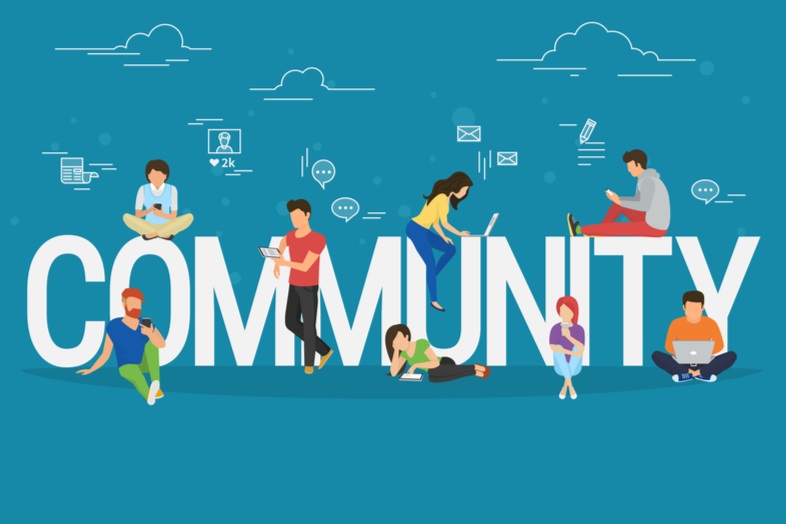
If you aren’t already using an insight community as part of your customer experience strategy, you are missing out on one of the most important tools available to make a difficult job a little easier.
If you are part of measuring and/or improving customer experience for your organization you will probably agree that we humans are quite complex, fickle creatures. It’s hard enough to accurately measure the experiences we deliver to humans. It’s even harder to change customer perceptions and opinions about those experiences.
I’ve been charged with designing customer experience measurement and improvement systems most of my career and I suggest you run quickly from anyone who tells you they have a way to make this work easy. There is no easy button. I can, however, tell you how to make it easier and give you a much better chance of moving the needle on whatever experience metrics are most important for your organization.
I worked for a GE business earlier in my career and my mentor liked to remind me that “humans are 3 sigma machines.” We make mistakes, we change our minds, our opinions shift. What makes us happy (or satisfied or willing to promote) can be a moving target. That’s why even the most sophisticated experience measurement systems often offer little help on the things you need to do to improve whatever metrics you are trying to move.
A well-designed online insight community with a carefully selected membership provides an always-on solution that can keep you closer to your customers than ever. A well-managed community will allow you to constantly dig deep with customers and understand what’s behind the numbers in your measurement system.
So, what does that mean in practical terms? Here are just a few examples of ways I’ve used insight communities to help solve for common customer experience challenges. After reading these you may start to imagine many more ways to use a community for CX:
What are We Really Measuring?: You have nice names for all your metrics like NPS or Effort Score or CSAT or Ease of Business but do you know what your customers are thinking about when they answer the questions that become those metrics? If your goal is to improve things like “ease” or “satisfaction”, do you know how your customers define these terms relative to your business or how their definitions may change depending on the specific circumstances?
It’s common to think the “big” metrics (like CSAT or Ease or NPS) are simply a sum of the functional parts of any transaction or experience. A simple example would be measuring speed of answer and first call resolution and assuming those two pieces add up to overall call satisfaction. Of course, it doesn’t work that way. Perceptions of an experience are rarely based just on the functional things you do for a customer. A community can help you understand your metrics from a customer perspective and guide you in ways to solve for the much more elusive emotional drivers and other hidden components beneath the metrics.
Nothing Ever Moves: Maybe you’re seeing the common “nothing ever moves the numbers even though we are constantly implementing improvements” scenario. I call this the “activity does not equal accomplishment” struggle. A community can help you break through this stagnation. A deep dive with your customers can help you understand the whys and ensure you are properly prioritizing your improvement activities.
Everything Moves: It’s also not uncommon to see a lot of variation in your metrics (this can be especially notable with NPS but that’s for another time). Are things bouncing up and down, for instance even though you don’t seem to be changing anything in your efforts. You can use your community to quickly explore these fluctuations and get to the root causes (there is rarely just one).
Solving Systemic Issues: Hopefully you are exploring both short and long-term solutions to your experience challenges. That is, reacting and immediately fixing some things as they occur but also being proactive by exploring ways to solve for recurring issues that lead to negative experiences for large segments of your customers. You may hear this short-term/long-term approach described as closing the inner loop and closing the outer loop.
The systemic (outer loop) issues can be especially tough to solve but tackling them is critical to sustainable experience improvements. Insight communities are a great way to both better understand these systemic issues and co-create viable solutions with your customers.
They Changed Their Minds: Finally, even if you feel you have a good understanding of what your measures currently mean to your customers and how to improve them, you can be certain (assuming your customers are humans) customer expectations are not stable. An insight community gives you an affordable way to constantly communicate and iterate with customers and will help remind you what you are able to control within your ecosystem is only a small part of what drives how customers rate their experiences with you.
______________________________________
So no, CX pros, your job is not going to get easier. The rapid pace of your competitors and emerging disruptors, demographic changes, socio-economic and political uncertainty, and the fickle nature of us humans guarantee you will always have many new challenges. Insight communities can’t take away those challenges, but they can ensure you are best prepared for what’s next.